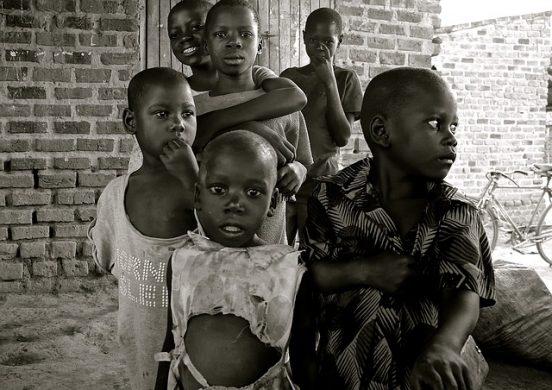ROME, 13 October 2015 (FAO): Social protection is emerging as a critical tool in the drive to eradicate hunger, yet the vast majority of the world’s rural poor are yet to be covered.
“The State of Food and Agriculture 2015” published by FAO Tuesday finds that in poor countries, social protection schemes – such as cash transfers, school feeding and public works – offer an economical way to provide vulnerable people with opportunities to move out of extreme poverty and hunger and to improve their children’s health, education and life chances.
Such programmes currently benefit 2.1 billion people in developing countries in various ways — including keeping 150 million people out of extreme poverty.
Expanding such programs in rural areas and linking them to inclusive agricultural growth policies would rapidly reduce the number of poor people, the report says.
At bryde ud af hungerfælden
Only about a third of the world’s poorest people are covered by any form of social protection. Coverage rates dip even lower in South Asia and sub-Saharan Africa, regions with the highest incidence of extreme poverty, the report said.
Without such assistance, many poor and vulnerable people will never have the opportunity to break out of the poverty trap — in which hunger, illness and lack of education perpetuate poverty for future generations, according to the report.
Most countries – even the poorest – can afford some kind of social protection program.
FAO estimates that globally, some 67 billion US dollar (405 milliarder DKR) a year in income supplements, mostly provided by social protection programs, would – along with other targeted pro-poor investments in agriculture – allow for the eradication of hunger by 2030.
That is less than 0.10 percent of world GDP.
Vi skal forstå værdien af et socialt sikkerhedsnet
Currently many extremely poor households are forced to sell off productive assets, put children to work, over-exploit their small landholdings unsustainably, or settle for badly paid jobs.
Yet basic social transfer schemes offer the poor an opportunity to improve their own productive potential. They also have positive spillover effects on local economies, increasing business opportunities, raising rural wages, and allowing the poorest to acquire or invest in assets.
In Zambia for example, a pilot cash-grants program led recipient households to greatly increase livestock ownership as well as land under cultivation, input use and ownership of tools such as hoes, sickles (segl /krumkniv) and axes, leading to a 50 percent jump in the overall value of locally produced agricultural commodities.
Beneficiaries spent more on food, clothing and health-and-hygiene – an amount 25 percent greater than the value of the initial transfer.
Den gode cirkel
The wider community also benefited through the increased demand for locally produced goods and services generated by the transfer-every dollar transferred generates an additional 79 cents in income, often for non-beneficiaries providing these goods and services.
At least 145 countries today provide one or more forms of social assistance, including unconditional cash transfers, meaning outright grants for eligible (berettigede) recipients, conditional cash transfers, usually linked to school attendance or health checkups and, public-works programs that offer guaranteed employment.
Other forms include in-kind transfers, including food distribution and school feeding programs.
Penge på bordet betyder alt
The report stresses that the notion that social protection reduces people’s work effort is a myth.
Rather, recipients often respond to social protection positively, including improving the nutrition and education of their children, relying more on home production rather than poorly paid wage work and also increasing their participation in existing networks such as funeral societies, a common form of risk management in many traditional communities.
Social protection schemes can also be transformative over time.
One well-designed Bangladeshi programme gave poor rural women livestock and other productive assets, as well as a monthly stipend to cover the period until recipients were able to earn additional incomes.
The FAO report cites other successful examples of social protection programs in Ethiopia, Ghana and Lesotho.
Such findings show how social protection is an investment, rather than a cost. It is also clearly illustrated by Brazil’s Bolsa Família, a well-integrated scheme that reaches a quarter of the country’s population and costs only 0.5 percent of GDP.
Det hele må spille sammen
Still, the report stresses how social protection alone cannot sustainably eradicate hunger and rural poverty.
It therefore underscores the importance of combining and coordinating public investment in social protection with public and private investments in the productive sectors of agriculture and rural development.
Such actions will ensure inclusive economic growth as a sustainable way to break the cycle of rural poverty.
Læs hele rapporten fra FAO her














